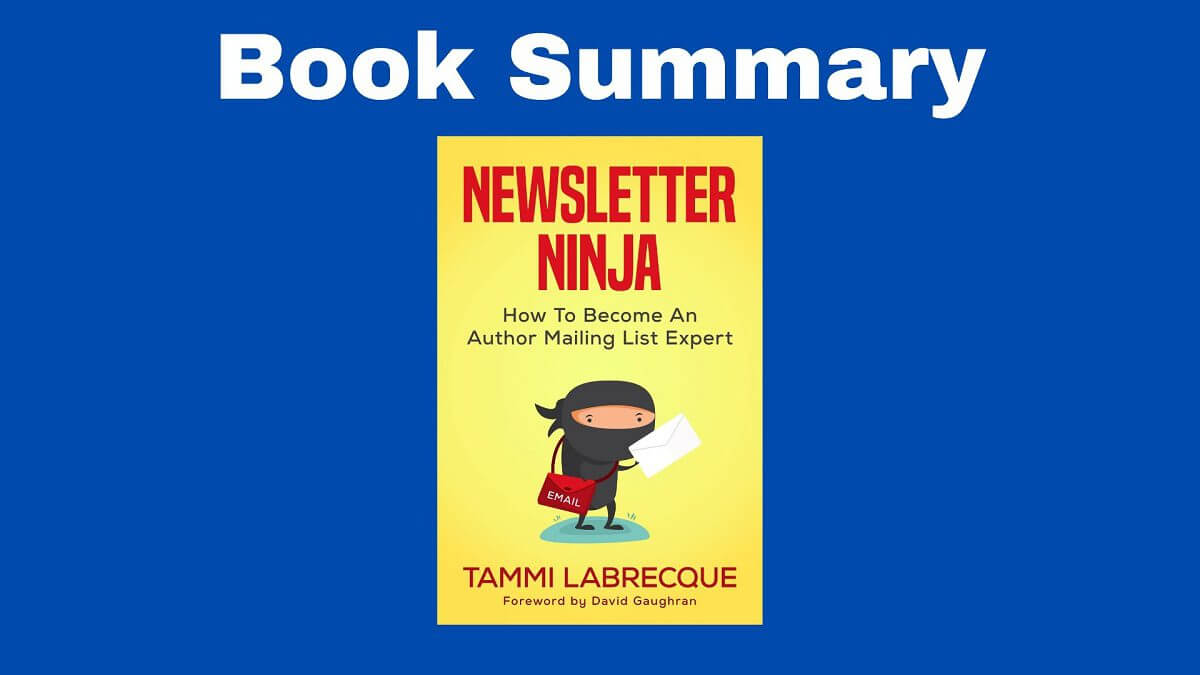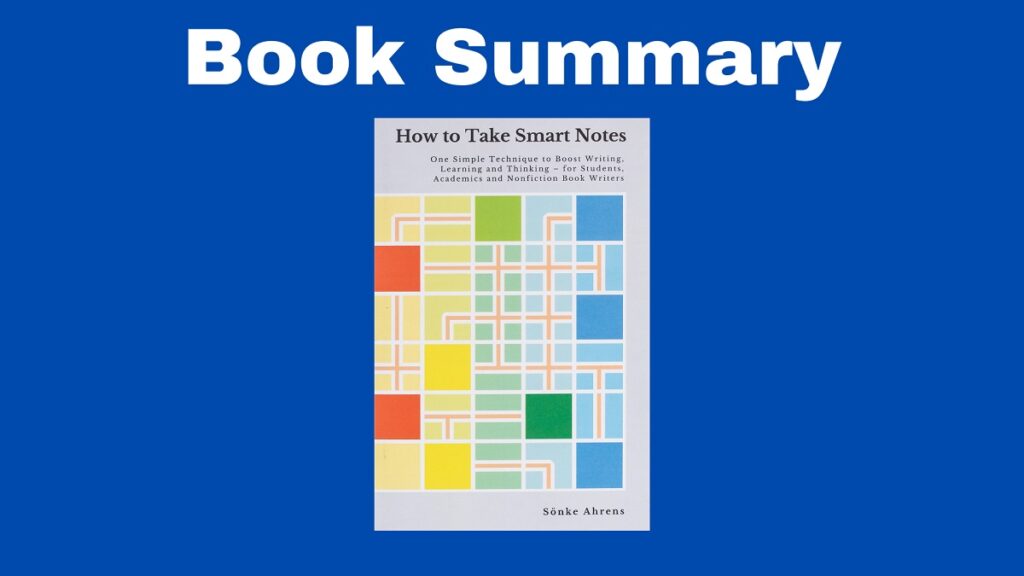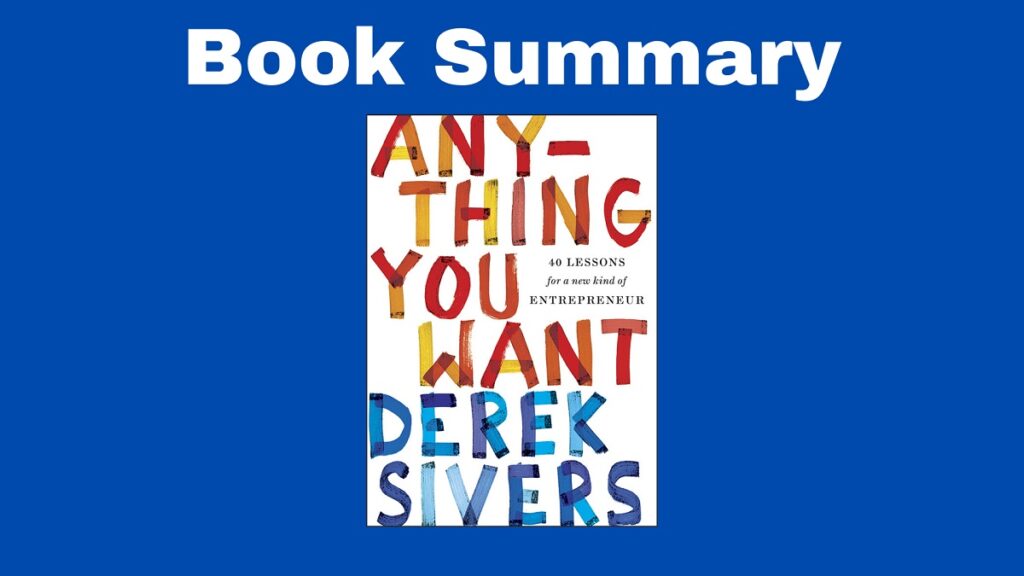The Book in Three Sentences
Newsletter Ninja is a comprehensive guide that will help you create and maintain an engaged mailing list. This book will teach you to improve engagement, build a list of excited readers, and promote your books. If you are looking for a resource that will teach you how to start a newsletter from scratch, grow your existing one, or improve your knowledge on the topic, it’s Newsletter Ninja.
Newsletter Ninja Summary
Chapter 1: Who Am I (and Who Are You)?
The author of Newsletter Ninja is Tammi Labrecque, an independent author, editor, and publisher. She specializes in newsletters and she wants to help people with email problems. The most common issues include people who want to start mailing lists but don’t know how, people who have mailing lists but want to make them bigger, and people with big mailing lists but who have an unengaged audience.
Chapter 2: You Are Not Your Reader, But You Are a Rockstar
Don’t make business decisions by relying on your consumer behavior. You make decisions by trying things, getting feedback from readers, and analyzing the results. In other words, you’re not your reader, you are an author. To the people who follow you and your work, you are a rockstar.
Chapter 3: Why You Need a Mailing List
You need a mailing list because, unlike Facebook Groups, Subreddits, or Twitter followers, a mailing list belongs to you. Some people resist building a list because they think it’s too much work, they already have social media followers, they’re using other platforms, or they think email is dead. The truth is that building an audience on a platform that doesn’t belong to you is a bad business decision. A mailing list is yours and you can use it to your advantage when you need something. On top of that, when you send something through the list, people are likely to read it, click on it, or buy from it. Also, email has fewer distractions when compared to other platforms.
Chapter 4: My Mailing List Philosophy
Your mailing list is for more than just selling something. Don’t use your mailing list just for selling because you’re not selling what you think you are. The main purpose of your newsletter is to convert casual readers into what the author calls “superfans”. You’re not selling books, ads, or subscriptions, you’re selling yourself. Your list gives you an excuse to be more relaxed and open. If your list is underperforming, it’s not the subscribers’ fault, it’s your fault.
Chapter 5: Planning and Setup
The platform you use isn’t important. What’s important is what your mailing list can do. In other words, choose the email marketing service (or EMS) that’s right for you. You’ll have to choose an EMS according to the size of your list, the frequency with which you send emails, the chances you have of moving from one EMS to another one, and your budget. Setting up your list is simple, but plan to make it easier.
Chapter 6: Onboarding
An Onboarding Sequence is an autoresponder that tells people who you are and encourages them to stay on the list. An autoresponder is an automated email that’s sent when a subscriber does something. For example, when someone subscribes to your newsletter, an email can show them the kind of work you do.
The Onboarding Sequence introduces subscribers to you and gives them a taste of your newsletter. The sequence should be as long as it needs, you should offer something personal, and you should then end the sequence by sharing what’s next. Also consider offering something for free, such as an ebook. Subscribers come in two forms: organic subscribers are high-quality subscribers and they sign up on your website, Twitter, or Facebook. Giveaway subscribers go through a different sequence.
Chapter 7: The First Date
The Onboarding Sequence resembles the dating process. In both, you introduce yourself to someone and watch their actions to see if they’re a good fit. The first thing you should do is optimize the confirmation email and the welcome email. The confirmation email is the message people who signed up for your list get in their inboxes. You have to submit instructions on how subscribers can check their spam folders so that they can whitelist their email addresses. The welcome email is an automated message that welcomes subscribers and thanks them for being on the list.
The first email on the onboarding sequence has two goals: a link to click on and a question that encourages people to send a reply. The next email should be short, but you might want to consider explaining how the freebie you provided works on different devices. After a few days (around a week), send an email where you introduce yourself again and the kind of work you do. Consider adding some personal details because this is what people remember the most. Every email you send should encourage readers to open, click, or reply.
Chapter 8: The Sign-Up Process
The newsletter signup process represents a contract between you and your subscribers. They subscribed to your newsletter because you promised this something. This promise comes in the form of updates from you, an ebook, or access to an exclusive story. Under no circumstance share your subscribers’ email addresses. Also, it should be clear from the start how often you’ll be sending emails, so respect their time.
You don’t want all people to sign up for your list, you only want the right people. You don’t want subscribers for your next book, you want them for you. Your signup form has one vital field, the email address field. Beyond that, every additional field you have can lose you subscribers.
Chapter 9: The Perfect Subscriber
Since most of your subscribers have one thing in common (love for your writing), you must send emails that resonate with them. You can do this by creating a subscriber avatar, but first, you need to figure out who your perfect subscriber is. A reader avatar is a broad description of your ideal subscribers: age, income, the kind of books they like, and their hobbies. A subscriber avatar is much more detailed and focused. This is how you write your emails with one ideal subscriber in mind, even if thousands read your newsletter.
Chapter 10: Strategies vs Tactics
Strategies are general plans to reach goals. Tactics are the individual actions you take to implement the aforementioned strategy. While tactics change from time to time, strategies don’t.
Chapter 11: Organic List Building
The best way to build a list organically is by putting out quality content that people want to read. The second best way is by becoming visible. You can do this on Twitter and Facebook, adding it as an email signature, in the back of your books, and sharing it on groups or your website. This attracts people who’ve heard from you before. But what about the ones who haven’t?
Chapter 12: Straight-Up Bribes
To attract new subscribers, you give something for free. The author refers to these freebies as cookies and they’re a great way to “bribe” people to subscribe. So what do you give those people that impresses them and convinces them that your emails are worth your time? Give them a complete experience, not just a fraction of a book. It should appeal to new readers. Finally, consider resources other than books.
Chapter 13: Engagement
Don’t send emails just when you’re about to release something. Don’t promise gifts that are unrelated to your work (such as Kindle Fire tablets or gift cards). You may have subscribers who stick around and never read your newsletter, but there’s not a lot you can do about it.
Chapter 14: Deliverability
This is the probability that your emails are delivered to people’s inboxes rather than their spam folders. Lots of links, and images, the inclusion of certain words, or too many exclamation points can lead to your emails being flagged as spam. Avoid sending boring emails too. If you see a decline in open rates, adding more subscribers isn’t the answer. To increase deliverability, you have to deliver value.
Chapter 15: Building Relationships
Why do you want to build relationships with your readers? You create a fanbase and you make money as a side effect for adding value to their lives. How do you do it? This has two parts: first, you get to know your subscribers by asking questions that encourage people to answer you. Second, you let subscribers get to know you, you do this by being authentic.
Chapter 16: Delivering Value
Value usually comes in the form of content that people will enjoy or find useful. Again, the sole purpose of your newsletter shouldn’t be to sell something. Consider using the Give-to-Ask ratio to keep everyone happy. This involves giving something for free and then asking subscribers to do something in exchange.
Never waste your subscribers’ time and always treat them well. Each email you send should have something for your subscribers. Something that makes them special, make emails so good that they recommend them to others, and send emails that are relevant to them. Don’t spam people’s inboxes.
Chapter 17: Re-Engagement
This is where you identify all the people who don’t interact with your emails and design specific campaigns so that they do. One great way to do this is by writing appealing headlines and by including a freebie.
Chapter 18: Purging Dead Wight
People who don’t interact with your emails hurt your deliverability. Get rid of them by identifying who’s never opened your emails. Send them a “do you want to stay email” and if they never reply, unsubscribe them from the list.




